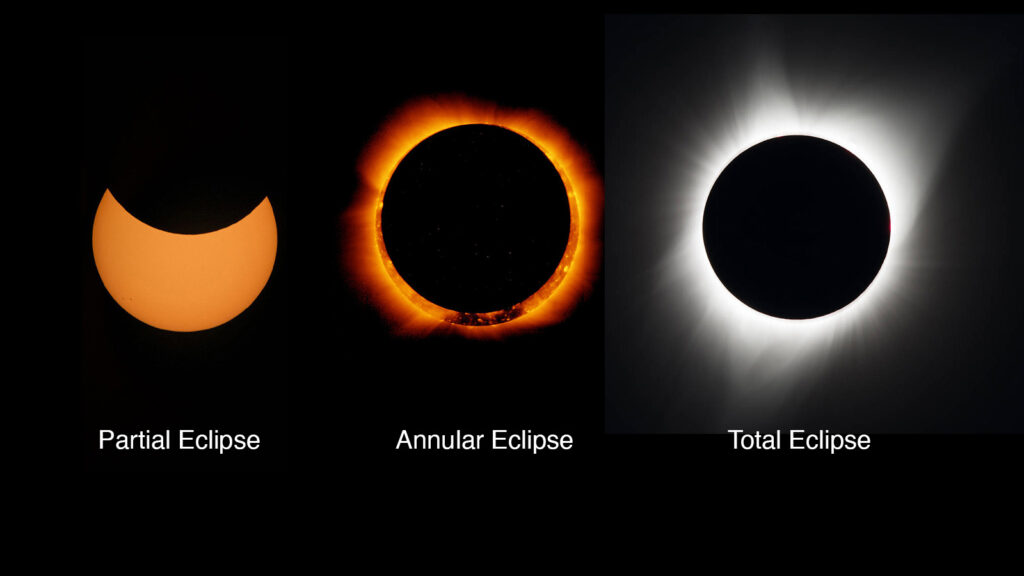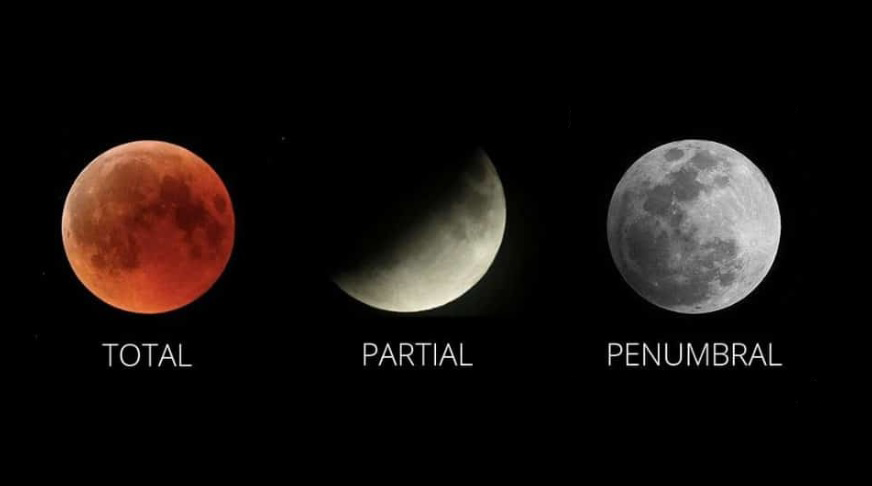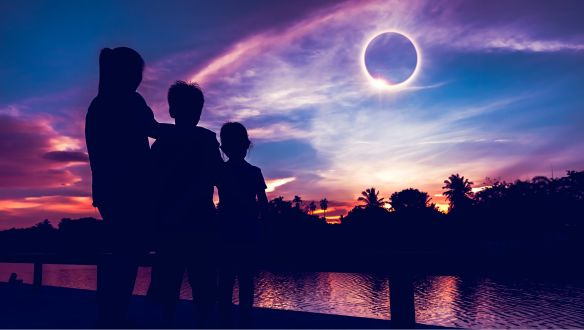A celestial spectacle is coming……
A total solar eclipse. For those who have heard of an eclipse but don’t know what one is, continue reading. An eclipse occurs when one celestial body passes in front of another, partially or completely blocking its view.
For Earth, we have two types of eclipses: solar and lunar. So what’s the difference between the two:
Solar Eclipse
This occurs when the moon passes between Earth and the sun, casting its shadow on Earth. There are 3 types of solar eclipses, total eclipse; where the moon completely covers the sun, only revealing its outer atmosphere known as the corona. A partial eclipse; is where only part of the sun is masked by the moon and an annular eclipse; is when the moon is too far from Earth to completely cover the sun, leaving a ring of sunlight visible around the edges.

Lunar Eclipse
A lunar eclipse occurs when Earth passes between the sun and the moon, during the full moon phase, with Earth’s shadow falling on the moon. Lunar eclipses can also be total, partial or penumbral. During a total lunar eclipse, the Earth completely blocks the sun’s light from reaching the moon, causing it to appear red or copper coloured, this is known as a “Blood Moon.” A penumbral eclipse occurs when the moon passes through the outer part of Earth’s shadow, this is known as “penumbra” and unlike total or partial lunar eclipses, where the moon passes through the darker central part of Earth’s shadow (the umbra), in a penumbral eclipse, the moon only travels through the outer, lighter part of the shadow which makes the moon appear slightly dimmer than usual though it can be difficult to notice.

For those eager to witness the solar eclipse that is happening on 8 April 2024, here is the link to find out if it will be visible in person in your area.
Can I see the upcoming eclipse from my location?
Unfortunately, if you are in Australia, you will not be able to view this event in person, however, below are some links to the next best thing, watching the event online.
NASA – Eclipse 2024 – Livestream
Exploratorium – Eclipse – Livestream
So mark it in your calendars and happy viewing 😊


Really cool and I love the count down clock … great addition to your blog!
Thanks Sonja, I will admit I am proud of using that 🙂
The countdown clock is brilliant – and the other visuals are spectacular as well.
Thank you Linh, I was a little excited to put a countdown clock 🙂
This is great! Too bad I live in Australia, in a mansion, by the beach, with a yacht, surrounded by gold and jewels. But thanks for supplying the NASA link.
This is brilliant!! I know what I’ll be wishing I was doing in 10 DAYS, 23 HRS, 39MINS, 5SECS.
Date saved! I’ve been hearing about this online, this was a great summary of what will actually happen!